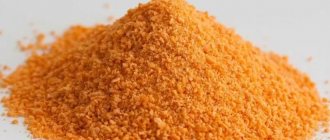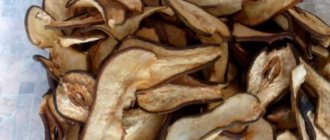Shelf life table for starch
| wdt_ID | Kinds | Varieties | Peculiarities | Shelf life |
| 1 | Potato starch | Raw starch is divided into 1st, 2nd and 3rd grades. Dry starch is “Extra”, highest, first and second grades. | Sold raw and dry. A distinctive feature of potato starch is the high initial viscosity of the paste. | Assigned by the manufacturer. Usually, no more than 3 months for raw and 2 years for dry starch. |
| 2 | Corn starch | There are 3 grades: highest, first and amylopectin grade. | Corn starch paste has a low viscosity. The starch itself has a specific corn smell. | Assigned by the manufacturer, usually for no more than 2 years. |
| 3 | Wheat starch | Extra, premium and first grade | It has lower viscosity and greater transparency than potato and corn. Has a neutral taste. | From one to two years. |
| 4 | Rice starch | Extra, premium and first grade | Forms opaque pastes of low viscosity with high storage stability. | Shelf life is also about 2 years |
| 5 | Amylopectin starch | Itself is a variety of corn starch | Derived from waxy corn, amylopectin starch is different from other types of corn starch. A paste made from such starch has good viscosity and moisture-holding ability. | Up to 2 years |
| 6 | Modified starch | In the Russian Federation, the use of more than 20 types of modified starches is permitted. (E140, E 1404, E1405, E1410, etc.) | The term "modified starch" has nothing to do with genetically modified foods. It is ordinary starch with additives needed for specific purposes. | Up to 2 years |
REFERENCE: Products high in starch are primarily legumes (beans, lentils), vegetables (potatoes, zucchini), nuts, cereals and flour made from them.
Harm of potato starch to the human body
In addition to the positive aspects, potato starch also has negative aspects.
Low nutrient levels
Unlike its source, potatoes, this starch contains no vitamins or minerals. As far as essential nutrients go, it really only contains one thing: carbohydrates.
Excessive consumption of foods low in nutrients leads to their deficiency in the body, causing problems ranging from a weakened immune system to serious diseases.
Genetic changes
Potato starch consists of two main parts: amylose (20%) and amylopectin (80%). Amylose is considered undesirable because it stimulates gelation. Potato starch can be produced from genetically modified potatoes. One specific example is the Amphlora variety, which is a genetically modified potato that was specifically designed to produce only the amylopectin component of starch (6).
Try to use only high-quality potato starch from natural potatoes, and do not use GMOs. Genetically modified foods contribute to the development of cancer, infertility, liver and brain diseases, and genetic mutations.
Potential Side Effects and Allergies
When you first start incorporating potato starch into your meals, you may notice some temporary changes in your digestion, such as bloating and flatulence. Potato allergies are not common, but you should avoid potato starch if you have an allergy to foods containing potatoes or a potato intolerance.
Optimal storage conditions at home
Starch, like any other food product, has certain storage conditions. To ensure a shelf life of 2 years, manufacturers recommend storing any type of starch in a dry and ventilated place with a humidity of no more than 75%, away from products with a strong odor.
- Regardless of the variety and type, starch is stored well in cool, dry places, best in cabinets where sunlight does not penetrate;
- The air temperature should be about 20 ° C, relative humidity - 75%;
- It is best to store starch in its original packaging, but if the integrity of the packaging is damaged, then it is necessary to pour the starch into an airtight, waterproof container. Such measures are necessary because starch has strong hygroscopicity, that is, it absorbs all the moisture that gets into it and deteriorates;
- You can store raw and dry starch in the refrigerator and freezer only in the original sealed packaging.
If these simple conditions are met, starch can be stored for quite a long time, but it is better to use it before the shelf life set by the manufacturer expires.
Story
In 2012, starch production worldwide was approximately 75 million tons. The main plant starches are obtained from wheat, corn, cassava and, finally, potatoes. These starches have similarities and differences in their chemical composition and nutrient content (9).
In addition to matzah (in Jewish culture), which is prepared according to strict rules, prohibited ingredients during Passover include: wheat, barley, rye, oats and spelled. Cornstarch is not considered kosher, so it is also not allowed. So, what ingredient is commonly used in baking for the Jewish holiday of Passover? The answer is potato starch (10).
If you read ingredient labels carefully, you may be surprised to see potato starch or potato flour in the following (11):
- baked goods such as muffins
- bread
- candies
- canned soups
- sauces
- salad dressings
- grated cheese
- spicy mixtures
- various packaged food products
Why is starch “afraid”, what conditions are detrimental to it?
Starch is a durable substance, but, unfortunately, it can quickly be spoiled.
- The most dangerous enemy of starch is water. Wet starch loses all its properties and becomes unsuitable for any actions with it. Drying moisture-saturated starch at home will also not work.
- The second enemy of starch is pests. Yes, the same bugs that crawl in semolina, flour, buckwheat will also not refuse to frolic in starch. There are a huge number of species of these bugs, but we will not talk about them, because we do not need any of these species in starch.
- The last enemy of starch is strong odors. Starch absorbs everything that is around it, including odors. For example, take the smell of onions. Having absorbed the pungent onion smell, the starch will happily transfer it to jelly, pudding or any other dessert that you want to treat yourself and your family to. No, onions smell great in those dishes where they are needed, but definitely not in berry jelly.
REFERENCE: The only role of starch in the human diet is its conversion into glucose for additional energy.
Potato starch in medicine
In medicine, starch is used in various fields:
- In the treatment of diabetes, preventing cardiovascular diseases, lowering cholesterol in the blood, participating in the elimination of toxic substances and waste. It is worth monitoring your intake due to the increased calories that increase the weight of a diabetic.
- In the fight against pancreatitis - it improves the functioning of the pancreas, reduces the likelihood of inflammation and speeds up the healing process.
- For the treatment of diseases of the gastrointestinal tract.
- In the treatment of hemorrhoids to relieve irritation, itching and heal fissures.
Every doctor points out the need to control consumption rates due to the high calorie content.
The shelf life of starch in the store
Few of us make our own starch at home, so we buy it at the store. Everything is simple with the timing of the sale of starch in the store. A store can sell goods only if two conditions are met:
- The starch packaging is not damaged
- Expiration date has not expired
With the first point, everything is extremely simple: the packaging is torn - it should not be on the counter, the product is damaged.
The expiration date should be clearly visible on the packaging, not covered up, not closed. Usually, the product indicates both the production date and the expiration date, as well as the expiration date itself, in our case it is up to 2 years.
Best before date
How long starch can be stored without losing quality depends on its type, type of packaging, and external factors.
The manufacturer indicates the expiration date of starch on the packaging. And it calculates it based on the above data.
The shelf life of corn and potato starch is 2 years, and if the raw material for it is wheat - only 12 months.
Obtaining starch is a rather labor-intensive process, so practically no one does this at home. The easiest way is to buy a finished product in a store where certain deadlines for sale are set.
When purchasing a product, pay attention to its packaging. It should not be damaged, and the issue date and expiration date should not be erased or clearly printed.
You can learn about the storage period and conditions of flour from this publication.
Use in cooking
Corn starch is used as a thickener if you need to obtain a liquid, flowing consistency. When baking, it is used equally with wheat flour, but not more than half of the total mass. This product is preferred by adherents of a gluten-free diet, as well as those who like a clean taste without foreign odors.
Where is it added and how is it used?
Product add:
- in sauces, ketchups, mayonnaise, gravy, yoghurts to thicken and obtain a homogeneous viscous structure;
- in margarines and spreads as an emulsifier;
- in ground meats and sausages to retain moisture and impart uniformity.
In cooking, corn starch is used to prepare thick soups, pancakes, and batter. In baking it is used for pancakes, cupcakes, muffins.
In order to thicken 0.5 liters of liquid, 1 tbsp is required. spoon of starch.
What can be replaced?
The first thing that comes to mind is replacing corn starch with potato starch. This is partly true, but you should take half as much potato, taking into account the higher viscosity.
Those who are used to adding starch powder to cheesecakes or cottage cheese casserole can replace it with semolina, or simply sift the flour well and add a little baking powder.
To prepare confectionery products with a delicate filling, you can use gelatin or agar-agar. For biscuit cream, substitute egg yolk for 1 pc. instead of 2 tbsp. spoons of starch.
How much starch is in one spoon?
Tablespoons and teaspoons come in different sizes, and the starch itself comes in different densities - one tablespoon can hold either 20 or 35 grams of starch.
If the exact amount of powder in grams is not indicated in the recipe, you will have to rely on average standards:
- 1 tbsp. level spoon - 9-10 grams;
- 1 tbsp. heaped spoon - 27-30 grams;
- 1 level teaspoon - 3 grams;
- 1 heaped teaspoon - 10 grams.
Popular recipes
Many delicious and healthy dishes are prepared using corn starch. We will share simple recipes that even a young, inexperienced housewife can use.
Fresh berry jelly
Prepare the following ingredients:
- berries (cherries, sweet cherries, currants) - 400 g;
- water - 1 liter;
- sugar - 5 tbsp. spoons (or to taste);
- starch - 6 tbsp. level spoon (60 g)
Place the washed berries in a saucepan, add water, add sugar and bring to a boil. Boil for 8-10 minutes until soft.
In a separate container, mix starch with half a glass of cold water, knead thoroughly. Pour the diluted powder into the pan with the compote in a thin stream, stirring constantly. Bring the jelly to a boil over low heat.
After the jelly has cooled a little, pour it into glasses or bowls. Jelly made from corn starch is not too thick and tastes good.
Pancakes with cornstarch
These thin, delicious pancakes are quick to prepare, gluten-free, and perfect for breakfast or afternoon snack.
Ingredients:
- 1 glass of milk;
- 2 eggs;
- sugar (to taste);
- 2 tbsp. spoons of starch without top.
Pancakes are prepared in the usual way, just like pancakes made with flour. Remember to stir the dough so that the starch does not settle to the bottom of the container. Yield: 7-8 pancakes.
Homemade marshmallows
Homemade marshmallows are a tasty and harmless treat.
Ingredients:
- 2 cups sugar;
- 2 egg whites;
- ½ glass of water;
- 30 g gelatin;
- 5 tbsp. spoons of corn starch (50g);
- 100 g of berries (cherries, currants, blueberries);
- 150 g powdered sugar.
Rub the berries through a sieve and separate the juice. Mix water with sugar and prepare sugar syrup. Soak the gelatin in water for 15 minutes and then melt in a steam bath. Beat the egg whites, combine with the syrup and beat until thick and homogeneous.
Add gelatin and berry juice to the resulting fluffy mixture and mix gently. Place the mixture in a cooking bag with a nozzle and squeeze the “sausages” onto parchment previously sprinkled with a mixture of starch and powdered sugar. After two hours, the delicacy can be served!
Application in other areas
Corn starch has found use in many industries, as well as in everyday life. The areas of use are varied:
- in the textile industry for sizing and imparting strength to threads;
- in the production of plaster, gypsum, cement to impart viscosity;
- in paper production for sizing and gluing;
- in the pharmaceutical industry as a binder;
- for household needs: cleaning silver, removing unpleasant odors from shoes, etc.









